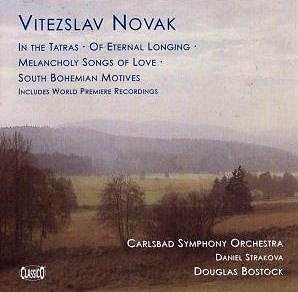 Composer: William Primrose
Composer: William Primrose
Works: Brahms Viola Sonata No. 1, Brahms Viola Sonata No. 2, Arthur Benjamin Elegy, Waltz and Toccata, Roy Harris Soliloquy and Dance, Fritz Kreisler Praeludium and Allegro in the style of Pugnani
Performers: William Primrose (viola), William Kapell (piano), Gerald Moore (piano), Vladimir Sokoloff (piano), Johana Harris (piano), Franz Rupp (piano)
Recording: Various dates between 1937 and 1946, Victor and HMV
Label: Pearl GEMM CD 9253
The disc featuring the esteemed violist William Primrose presents a compelling collection of works that highlight both his virtuosic capabilities and the rich repertoire of the viola. Spanning compositions from Johannes Brahms to Arthur Benjamin, Roy Harris, and Fritz Kreisler, this recording serves as a testament to Primrose’s enduring legacy, illuminating his contributions to the viola’s prominence in the chamber music and solo repertoire. The historical context of these works—the Brahms sonatas, in particular, written during the late 19th century, sit alongside mid-20th century compositions that reflect the tumultuous backdrop of World War II—provides a rich tapestry for exploration.
The performances of Brahms’s Viola Sonatas are particularly noteworthy, showcasing a synergy between Primrose and his pianists, William Kapell and Gerald Moore. The first sonata opens with a lyrical intensity, where Primrose’s tone is both warm and assertive. His phrasing is meticulously articulated, allowing the music’s inherent humor and vigor to shine through. This clarity of expression is coupled with a robust bowing technique that imparts a belligerent energy when called for, particularly in the sonata’s more vigorous passages. The second sonata, recorded with Moore, further emphasizes this clarity, as Primrose navigates the intricate interplay between viola and piano with an almost conversational ease, underscoring the work’s lyrical and rhythmic contrasts.
The inclusion of Arthur Benjamin’s Elegy, Waltz and Toccata introduces a slightly darker sound world, with the elegy presenting a shadowy, introspective character reminiscent of Prokofiev’s first violin concerto. Primrose’s approach here is especially poignant, capturing the sense of disillusionment embedded within the piece’s fabric. The technical demands of the work are met with aplomb, and the listener can easily sense Primrose’s deep emotional engagement with the music. The subsequent waltz and toccata offer a refreshing contrast, where Primrose’s playful yet precise execution provides a delightful juxtaposition to the preceding elegy.
Turning to Roy Harris’s Soliloquy and Dance, recorded with the composer’s wife at the piano, Primrose’s interpretation reveals a nuanced understanding of the work’s emotional breadth. The Soliloquy, with its reflective and almost lamenting quality, showcases Primrose’s ability to convey profound introspection. The accompanying piano writing aligns seamlessly with the viola, creating a rich dialogue that resonates deeply. The Dance, in contrast, bubbles with rhythmic vitality, allowing Primrose to display his skill in navigating the work’s folk-inflected motifs with both agility and grace.
Fritz Kreisler’s Praeludium and Allegro, although a pastiche in the style of Pugnani, serves as a delightful encore. Primrose’s performance here is infused with a sense of charm and wit, capturing the playful spirit of the piece while maintaining a polished virtuosity. The violinistic qualities of the work translate beautifully to the viola, and Primrose’s deft handling of the lyricism and technical passages glimmers with both clarity and expressiveness.
Sound quality on the Pearl disc is commendable, with the historical recordings restored to preserve the ambiance of the original shellac experience. The light crackle is present yet unobtrusive, allowing the inherent warmth of Primrose’s tone to emerge vividly. Roger Beardsley’s engineering work is particularly praiseworthy, as it balances restoring clarity without sacrificing the character of these vintage recordings.
Primrose’s artistry—marked by technical prowess and emotional depth—shines throughout this compilation, affirming his status as a pivotal figure in the history of viola performance. This recording is a significant contribution not only to the catalogue of Primrose’s works but also to the broader appreciation of the viola’s capabilities within the classical canon. Each piece is a reminder of the artistry involved in both performance and interpretation, and the disc is likely to resonate with both dedicated Brahmsians and those exploring the rich repertoire for the viola.



